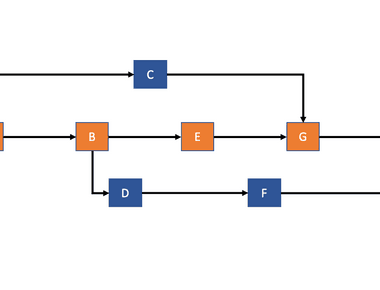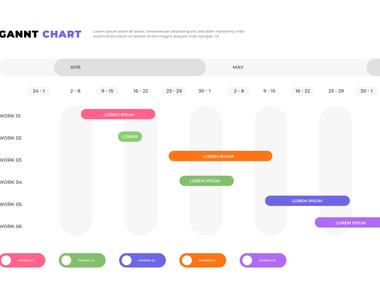Table Of Contents

Introduction
Good communication within a team is critical. The importance of having everyone in the team on the same page at all times cannot be over-emphasised. But it is easier said than done in real life, and the problem has compounded in the times of the pandemic, as we all can see. Many people are working from home and instead of having face-to-face collaborations, many companies now have virtual meetings on Zoom or Microsoft Teams or some other such tool.
There is so much more to communication than most people understand of the term. There are conscious and subconscious levels at which communication happens between individuals. It is a complex subject and every company that wants to achieve success in their domains must not shy away from discussing this topic with their employees and helping them understand every nuance of the subject.
This article discusses the various models of communication, and how they help you communicate better.
Paul Watzlawick’s Five Axioms of Communication
Thought is not said, said is not heard, heard is not understood, understood is not intentional, intentional is not skillful, skillful and intentional is not done and done is not maintained.
— Paul Watzlawick
Paul Watzlawick was an Austrian-American family therapist, psychologist, communication theorist, and philosopher. A theoretician in communication theory and radical constructivism, he commented in the fields of family therapy and general psychotherapy.
His theory states that a lot of communication is carried on below the level of consciousness. The five axioms of communication, formulated by Paul Watzlawick, describe the processes of communication that take place during interaction between any two parties. His axioms also give us a very logical explanation on how misunderstandings and conflict can occur. Following are the axioms that form the basis of his theory:
- Axiom 1: Cannot not
- Axiom 2: Content & relationship
- Axiom 3: Punctuation
- Axiom 4: Digital & analogic modalities
- Axiom 5: Symmetrical or complementary
Axiom 1: ‘One cannot not communicate’
A lot of communication happens at an unconscious level. As soon as two people perceive each other, they start communicating. Interestingly, even the way one reacts with facial expressions, or chooses not to show any perceivable behavioural action has some meaning. In other words, we communicate even when we don’t particularly want to.
Ask yourself the following questions:
- What do you communicate with your absence of action?
- What are you telling your peers when you are quiet and not expressing your ideas?
- Do you start to communicate as soon as you are in somebody else’s vision and hearing range?
- Are you really aware of when communication starts?
Axiom 2: ‘Every communication has a content’
Every communication has a content and relationship aspect. In almost every instance of communication, the relationship between the parties communicating with each other sets the context of how the content is to be interpreted – hence, also called meta-communication.
Let’s consider an example, communicating with your superior, or boss, at work is likely to be very different from communicating with a friend even if the content may be the same. When providing a friend with feedback, you could use words that might be considered offensive yet still have your feedback accepted quite happily. But if you use those same words when providing feedback to your boss, you could be considered impolite may as well risk losing your job!
Similarly, when someone else is present along with you and your friend, being casually impolite with your friend could be misinterpreted by the third party. The other person hears you from outside the relationship with your friend, and may misinterpret the message.
Important questions you must ask yourself:
- Are the words you’re choosing proper for the context and people present?
- Are you aware of the relationship aspect within your communications?
- Are you certain that the words you use don’t fall outside the level of communication you share with your listener?
Axiom 3: ‘Communication is punctuated’
The nature of a relationship also depends on the punctuation of the parties’ communication mechanisms. In other words, Watzlawick suggested that how good or how bad a relationship is, is determined by how the involved parties decipher each other’s intentions, actions, or mode of communicating.
Punctuation basically means the process of organizing groups of messages into logical interpretations. All parties involved structure the communication flow differently and therefore interpret their own behavior during communicating as merely a reaction on the other’s behavior.
For example, if you have a conversation with your colleague. The conversation makes you uncomfortable or upset. You choose not to express your discomfort explicitly and stay upset with him/her. The next time he/she tries to interact with you, you avoid them altogether.
In this example, the interactions create a cyclic cause-and-effect loop because there’s no real dialogue that allows either of you to see what is exactly happening. By understanding this axiom, you can break this communication loop. You could simply say to your colleague that you didn’t like what they had said earlier, and that was the reason you chose to stay away. This would give an opportunity to the other party to realize what went wrong in the communication earlier.
Axiom 4: ‘Communication involves digital and analogic modalities’
Human communication involves both digital and analogic modalities. The digital mode is what the person says what their words actually mean. While the analog mode has to do with how something is said or the nonverbal cues that go along with it.
It is quite likely that two opposing messages are sent by us unknowingly at once and this may cause misunderstandings and conflict. When a person sends a message with conflicting verbal, paraverbal, and nonverbal information, the nonverbal tends to be believed.
The way to address this is to be consistent. If you are confident about something, make sure you backup your words with the tone, pitch, and pacing of your voice, as well as with your body language.
Axiom 5: ‘Communication can be symmetrical or complementary’
Depending on whether the relationship of the partners is based on differences or parity, interhuman communication procedures can be classified as either symmetric or complementary.
A symmetric relationship is one in which everyone acts as equals, from a power perspective. If a symmetrical relationship gets out of hand, both parties can end up attacking each other in a power struggle.
A complementary relationship, on the other hand, is one of unequal power, such as parent-child, boss-employee, leader-follower. If a complementary relationship gets out of hand, the disparity will increase over time. The powerful may become more tyrannical, while the submissive will be even more limited in their opportunities to engage.
The iceberg model and why people seem to love it

Paul Watzlawick formulated the iceberg model on the basis of the four-ear model in connection with Sigmund Freud’s basic idea of the subconscious. At the heart of it, there is an assumption that in communication, the factual level such as information, figures, data and facts make up only 10% – 20% of communication. The remaining 80 – 90% are unconscious and are not communicated verbally. This is where the relationship level, the appeal level or the self-barrier level fall into, so that non-verbal elements such as gestures, facial expressions and so on also unconsciously flow into the communication.
If the factual level and the relationship level are not reconciled, conflicts can arise.
The iceberg model uses the imagery of an iceberg to illustrate that our experiences are deeply influenced by dynamics we cannot see that easily: the structures that form the framework within which we operate, and the beliefs we hold about how things work.
Sender-Message-Channel-Receiver Model of Communication

The sender-receiver model is probably the simplest communication model of all, and underpins most others. What it says is that the sender has an idea or concept he/she wants the receiver to understand, acknowledge and appreciate. However, before any useful outcome can be achieved from the communication, the receiver has to accurately understand the sender’s idea. This means the message has to be effective in the receiver’s space. Unless the message is received, decoded and understood by the receiver, the communication remains incomplete.
Summary & Key Takeaways
- The best way to improve your team’s communication is by helping them become aware of what goes on during the communication process, this includes the unintentional forms of communication that often occur on a subconscious and even unconscious levels.
- There are various models that you can use to understand communication, including five axioms of communication, the iceberg model, and the sender-message-channel-receiver model.
- Effective communication relies on being aware of nonverbal aspects of interactions with others; being aware will help you make the appropriate changes to improve communications within your team.
Quick Links
Legal Stuff








